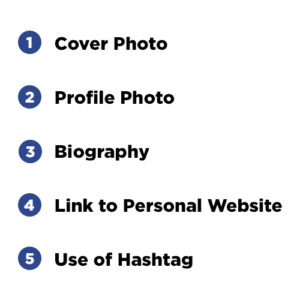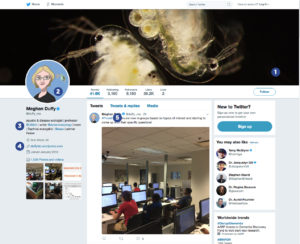Twitter is a real-time social network and news channel that allows users to share content and ideas with followers. Tweets have a 280-character limit.
- Start by following people you find interesting. Look at the kinds of tweets and content that spark discussion, likes, and retweets.
- Your feed will consist of tweets and retweets of people you follow, in chronological order, in real time. Think about who you want to reach.
- You cannot edit tweets, but you can delete them. Always assume that anything you post can—and probably will—be screenshotted and shared.
- You can like posts (heart symbol), comment on them, retweet (share the tweet to your timeline), or retweet with a comment (your words added on top of the tweet you want to highlight).
- Link to interesting content and say why you think it’s interesting.
- Use hashtags to categorize information and make it easier for users to find. For example, adding #Marketing or #WorldCup will expose your tweets to a wider audience than just your own followers.
- Identify hashtags affiliated with topics within your research or that your peers use frequently, then join the conversation.
- You can tag a person or account by using the @ (“@username”). They will receive a notification. It’s a way to start a conversation with someone or attribute content.
- Pin a tweet to the top of your timeline to feature an important announcement or update.
- Direct messages can be sent privately to people who follow you, or to users with “open” DMs.
- Don’t try too hard to gain followers or worry about how many you have. If you follow people you enjoy, engage with them, and make use of hashtags and tags, people will find you.




